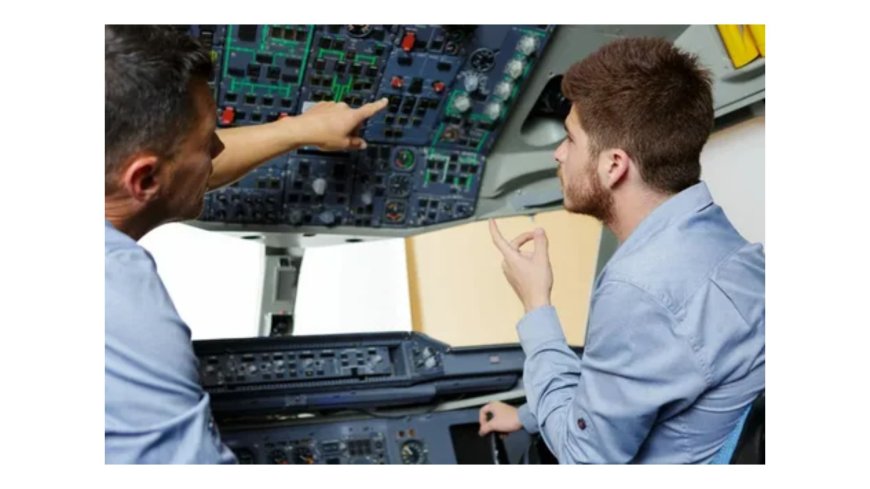Is Airplane Flight Training in Texas the Smart Choice for Modern Pilots?

Aviation training is a critical step for anyone seeking to become a proficient and safe pilot. The choice of training location and method can significantly impact a pilot’s career trajectory, operational safety, and long-term success. Texas has emerged as a popular destination for flight training, attracting both domestic and international students. This article explores the advantages of airplane flight training in Texas and the evolving role of both in-aircraft and simulator instruction in shaping skilled aviators.
How Do Training Methods Influence Pilot Proficiency?
The effectiveness of pilot training depends not only on location but also on the approach used. Traditional ground school and simulator sessions build foundational knowledge, but hands-on experience in the actual aircraft remains essential. In aircraft training programs provide pilots with the opportunity to apply theory in a real-world context. According to Florida Flight Center, in-aircraft training allows candidates to use the aircraft as a classroom, offering immediate access to avionics, controls, and system components. This approach helps pilots develop muscle memory, practice emergency procedures, and experience the true feel of the controls—benefits that simulators may not fully replicate.
It’s important to recognize that both in aircraft training and simulator training have unique strengths and limitations. Simulator training allows pilots to safely practice emergencies and scenarios that would be too risky or impractical to replicate in a real aircraft—such as engine failures, system malfunctions, or extreme weather events. Many industry professionals recommend alternating between in aircraft and simulator training each year to maximize proficiency and safety. Both methods are essential and complement each other, creating a well-rounded training experience.
What Are the Advantages of In Aircraft Training Programs?
In-aircraft instruction offers several tangible benefits for both new and experienced pilots. First, it allows for customized lesson plans tailored to the specific aircraft and mission profile. Pilots can learn to operate the avionics suite they will use in daily operations, making the transition from training to real-world flying smoother. The ability to practice abnormal and emergency procedures in the actual aircraft builds confidence and prepares pilots for unexpected scenarios. Additionally, using the aircraft as a classroom enables instructors to reinforce lessons by physically demonstrating system locations, pre-flight checks, and maintenance considerations.
How Does Simulator Training Enhance Pilot Development?
Simulator training brings its own set of advantages to the table. Advanced simulators enable pilots to safely practice rare or hazardous scenarios that would be unsafe to attempt in a real aircraft. They also allow instructors to pause, rewind, and review sessions, making it easier to correct mistakes and reinforce learning. Simulators provide a consistent training environment regardless of weather or aircraft availability, helping reduce costs and environmental impact by minimizing actual flight hours. When used in combination with in-aircraft training, simulators help pilots develop the skills and confidence needed to handle any situation they may encounter.
What Should Prospective Pilots Consider When Choosing a Training Program?
Selecting the right flight school involves evaluating several factors. Prospective pilots should consider the school’s safety record, instructor qualifications, fleet maintenance standards, and curriculum structure. It is also important to assess whether the program offers a balance of ground, simulator, and in-aircraft training. Schools that integrate in aircraft training programs into their curriculum provide a more comprehensive learning experience, equipping students with the skills needed to handle both routine and emergency situations.
The Bottom Line
Choosing airplane flight training in Texas and supplementing it with a balanced mix of in-aircraft and simulator instruction can provide aspiring pilots with a strong foundation for a successful aviation career. The combination of favorable weather, diverse airspace, and practical training methods ensures that pilots are well-prepared for the demands of modern flight operations. As the industry continues to evolve, training programs that emphasize adaptability and real-world experience—while leveraging the unique strengths of both in-aircraft and simulator training—will remain essential for producing competent and confident aviators.







































































![https //g.co/recover for help [1-866-719-1006]](https://newsquo.com/uploads/images/202506/image_430x256_684949454da3e.jpg)


























![[PATREON EXCLUSIVE] The Power of No: How to Say It, Mean It, and Lead with It](https://tpgblog.com/wp-content/uploads/2025/06/just-say-no.jpg?#)





















































